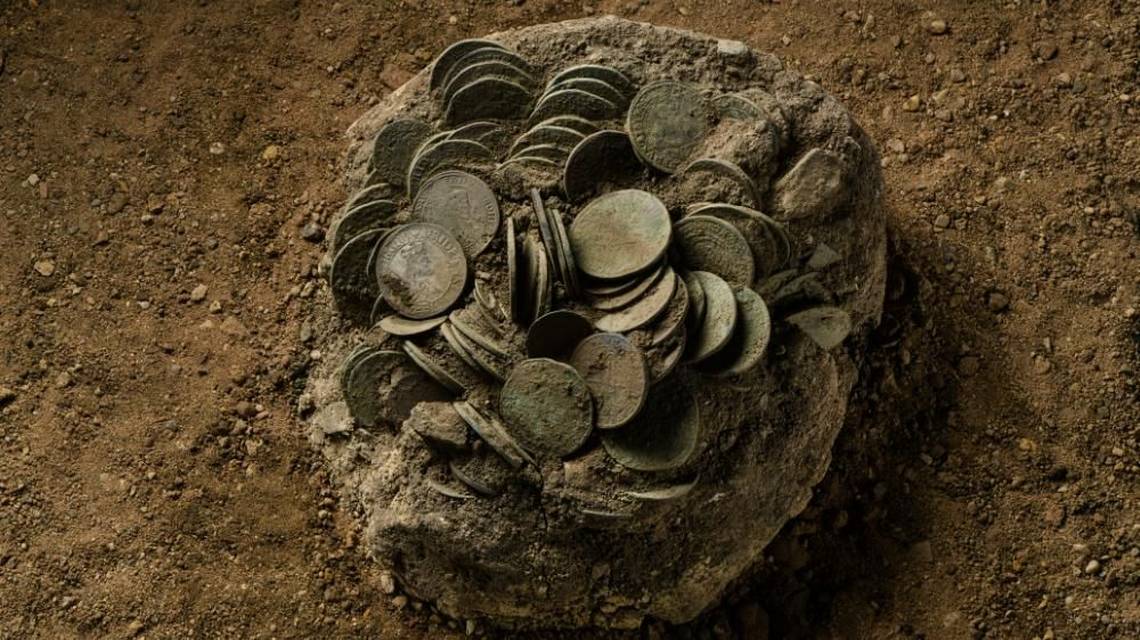Moc hezky napsáno ✌️
The Mayor's hoard of silver thalers and groschen worth millions
Categories: Nálezy nejenom s detektorem v západní Evropě
Archaeologists from the Saxony-Anhalt State Office for Conservation and Archaeology have announced the discovery of a hoard of silver coins from the 17th century. They were found by construction workers during the renovation of a historic farmhouse in Wettin. The coins are mainly thalers and pennies of several European countries, most of them in very good condition.
The farm, located in the middle of Wettin, has been renovated and maintained by the Altstadt Wettin e. V. since 2018. The organisation is dedicated to the preservation of the town's cultural heritage, which is threatened with demolition as a result of expanding modern development. The farmhouse dates back to the 16th and 17th centuries and was once also used as a pharmacy. During construction work in the gateway area of the courtyard, a total of 285 silver coins dating from the late 1750s were discovered some 50 cm below the current surface.
The coins found were very tightly packed in the ground, suggesting that they were originally in some sort of organic bag, pouch or tightly wrapped in cloth. They come from various European mints and represent a varied mix of currencies of the time. Most of the coins are regional Saxon issues, including Schreckenberg groschen and Albert VII cross thalers. Habsburgs minted in the Spanish Netherlands. The composition of the coins shows the extensive trade links of the time, as it includes coins minted by various German states, Austria, the Netherlands, Switzerland and Italy. The oldest coin in the collection dates from 1499, the most recent was minted in 1652.
The coins have been carefully removed, catalogued and treated in the restoration workshop of the State Office for Heritage Conservation and Archaeology Saxony-Anhalt (LDA). Oliver Dietrich of the LDA, "It is difficult to determine the former purchasing power, but the hoard of coins with a high silver content certainly represented a considerable value." he explained, adding that it probably corresponded to the earnings that a master craftsman would have earned over ten years, which would roughly translate to about 12.3 million crowns today.
The hoard also contains several rare coins that are rarely found in Saxony-Anhalt, such as the Italian scudo of Odoardo Farnese from 1630 and the tallero minted by Cosimo II de' Medici in 1620. Historical records suggest that the likely owner of the treasure may have been a prominent merchant and former mayor of Wettin, Johann Dondorf, who lived in the house at the time the treasure was deposited. Dondorf was known for his considerable wealth from agriculture, winemaking and brewing. He apparently hid the coins shortly after the end of the Thirty Years' War, when the region was undergoing significant economic and social upheaval.
"In addition to its scientific significance, the discovery of the Wettin coins is also an excellent example of the important contribution to oure knowledge can be achieved by voluntary work in close cooperation with the competent authorities for the protection of buildings and archaeological monuments in Saxony-Anhalt," added Dr. Claudia Beuger, supervising archaeologist and member of the Altstadt Wettin e. V.
Roman Nemec
Sources: heritagedaily.com, archaeologymag.com, miamiherald.com
 one of the coins - an Italian tallero
one of the coins - an Italian tallero
 coins in situ
coins in situ
 farmhouse in Wettin
farmhouse in Wettin
 Wettin coins
Wettin coins
The article is included in categories:










